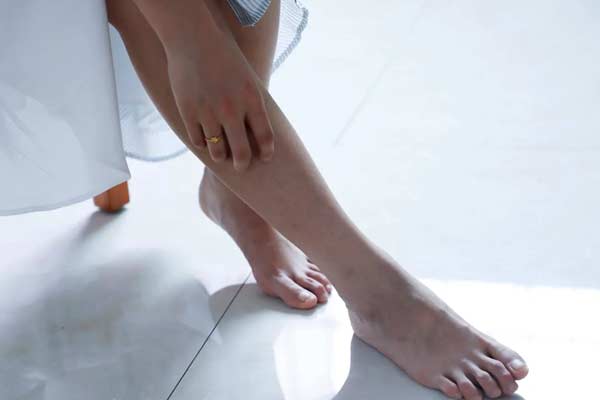Fibromyalgia is a long-lasting condition causing pain, fatigue, and sensitivity throughout the muscles, joints, and soft tissues, predominantly affecting women, with around 10 million cases in the United States.
Restless Legs Syndrome (RLS) is a neurological condition causing an uncontrollable need to move the legs, primarily during the night, impacting up to 10% of people, interrupting sleep, and diminishing life quality.
Some evidence suggests that fibromyalgia may be associated with restless legs syndrome. Some studies have found that people with fibromyalgia are more likely to have RLS than the general population.
However, the exact relationship between the two conditions must be fully understood. They may share underlying mechanisms, such as abnormalities in dopamine or serotonin levels, sleep disturbances, or other factors influencing them.
Fibromyalgia and Restless Legs Syndrome
Restless Legs Syndrome (RLS) is a neurological condition characterized by an overwhelming need to move the legs due to discomfort.
RLS is a common condition that affects around 10% of the population. People with fibromyalgia are more likely to develop RLS than those without the disease.
The exact reason why people get Restless Leg Syndrome (RLS) is still a mystery, but it might be due to an imbalance in dopamine, a brain chemical that helps manage how we move and feel.
Fibromyalgia is also associated with abnormal levels of dopamine, which may explain why the two conditions are often seen together.
People with RLS often experience uncomfortable sensations in their legs, such as itching, burning, or tingling. These sensations are usually worse at night and can interfere with sleep. The movement associated with RLS also disrupts sleep, as it can cause frequent awakenings throughout the night.
Periodic limb movement of sleep (PLMS) is another condition often seen in people with RLS. PLMS is characterized by involuntary movements of the legs during sleep, which can disrupt sleep and cause daytime fatigue.
Treatment for Restless Leg Syndrome (RLS) usually includes medications like dopamine agonists and iron supplements to raise dopamine levels in the brain.
Additionally, making lifestyle adjustments like engaging in regular exercise and reducing intake of caffeine and alcohol can help in managing the symptoms.

Symptoms and Diagnosis
Fibromyalgia symptoms include persistent pain, fatigue, disrupted sleep, and cognitive issues, and may also encompass headaches, irritable bowel syndrome, and sensitivities to light and sound. Some individuals with fibromyalgia may also suffer from RLS.
RLS is marked by a compelling need to move the legs, primarily at night, and may be accompanied by sensations like tingling or itching, leading to significant sleep disruption and daytime drowsiness.
Diagnosing either condition is intricate due to the similarity in symptoms with other disorders. Fibromyalgia is usually diagnosed through an evaluation of symptoms, medical history, and a physical examination, with additional tests to exclude other conditions. There are no exclusive tests for fibromyalgia.
RLS diagnosis might include a physical examination, medical history review, and a sleep study, with blood tests to identify any iron deficiency, a known contributor to RLS symptoms. Further examinations are required if a neurological disorder is suspected as the root cause.
Causes and Risk Factors
The exact reason people get Restless Legs Syndrome (RLS) is unknown, but it might be linked to many things. It is related to fibromyalgia, which causes pain all over the body.
These health issues are thought to be due to problems in the brain’s dopamine system, which helps control movement and mood.
People with fibromyalgia and RLS may have lower dopamine levels in their brains, which can lead to symptoms such as pain, fatigue, and restless legs.
Other factors that may increase the risk of developing RLS include age, gender, and certain medical conditions. Women are more likely to develop RLS than men, and the risk increases with age. People with depression, stress, and anxiety may also be more prone to RLS.
Medical conditions like diabetes, alcoholism, and kidney failure have also been linked to RLS. In some cases, RLS may be a symptom of peripheral neuropathy, a nerve disorder that causes numbness and tingling in the hands and feet.
Hormonal changes during pregnancy can also trigger RLS symptoms. Iron deficiency is another possible cause of RLS, as low iron levels can affect dopamine production in the brain.
Treatment for RLS may include medications to increase dopamine levels, iron supplements, and lifestyle changes such as avoiding caffeine and alcohol.
Impact on Sleep and Lifestyle
One of the most common symptoms of fibromyalgia is fatigue, which can make it challenging to stay awake during the day and interfere with nighttime sleep.
Restless legs syndrome (RLS) is another common symptom of fibromyalgia, which can cause uncomfortable sensations in the legs that make it difficult to fall or stay asleep.
Fibromyalgia can cause sleep problems like insomnia, sleep apnea, and restless legs, making people feel tired and sleepy during the day.
To manage these symptoms, people with fibromyalgia may need to make lifestyle changes, such as adopting a regular sleep schedule, avoiding caffeine and alcohol before bedtime, and engaging in regular physical activity.
They may also benefit from sleep aids, such as melatonin or prescription medications, and from participating in a sleep study to identify any underlying sleep disorders.
Comorbid Conditions
Other medical conditions often accompany fibromyalgia. These comorbidities can exacerbate fibromyalgia symptoms and make it more challenging to manage.
Here are some of the most common comorbid conditions associated with fibromyalgia:
Irritable bowel syndrome (IBS): IBS is a tummy problem that can make you feel pain and bloated and cause irregular bowel movements like constipation and diarrhea. Many people with muscle pain and tenderness, a condition called fibromyalgia, also have IBS—about 70%.
Arthritis: Arthritis, characterized by joint pain and stiffness, is often found in individuals with fibromyalgia, especially those suffering from osteoarthritis and rheumatoid arthritis.
Restless Leg Syndrome (RLS): People with Restless Leg Syndrome (RLS) often need to move their legs because they feel uncomfortable, usually with a tingling or crawling sensation. This condition is more common in individuals with fibromyalgia.
Tension headaches: Tension headaches, often linked to stress and muscle tension, are prevalent and can result in persistent, mild pain in the head and neck. They are widespread among individuals with fibromyalgia.
Anemia is when the body does not have enough red blood cells to carry oxygen to the tissues. It can cause fatigue, weakness, and shortness of breath. Some studies have suggested that anemia may be more common in people with fibromyalgia than in the general population.
Nausea: Nausea, a sensation of stomach discomfort often leading to vomiting, is a frequent symptom in individuals with fibromyalgia, especially those suffering from IBS.

Treatment and Management
There isn’t a cure for fibromyalgia, but various treatments can help control symptoms and enhance life quality. Individualized treatment plans may include medication, physical activity, and lifestyle modifications.
Medications
To manage fibromyalgia symptoms, various medications can be prescribed, including:
- Pregabalin: This medication is approved by the FDA to treat fibromyalgia. It works by reducing pain and improving sleep.
- Antidepressants: Duloxetine and milnacipran are examples of antidepressants that can be prescribed to alleviate pain and fatigue.
- Benzodiazepines: These medications may be prescribed to help manage anxiety and improve sleep.
- Anticonvulsants: Medications such as gabapentin and topiramate may be prescribed to help manage pain and improve sleep.
- Antinausea medications: These medications may be prescribed to help manage nausea and vomiting associated with fibromyalgia.
- Antipsychotic medications: These medications can be prescribed to help control symptoms like anxiety, depression, and sleep issues, making them more manageable.
Exercise
Exercise, including low-impact activities like walking, swimming, and yoga, can be beneficial for managing fibromyalgia symptoms.
These exercises can enhance flexibility, lessen pain, and promote better sleep.
It’s crucial to begin with light activities and progressively intensify the duration and level of exercise for optimal benefits.
Lifestyle Changes
Lifestyle changes can also help manage fibromyalgia symptoms. These may include:
- Getting enough sleep: For better rest, stick to a regular bedtime and avoid caffeine and alcohol before bed.
- Managing stress: Meditation, deep breathing, and massage help manage stress and reduce pain.
- Energy conservation: Pacing daily activities and taking breaks as needed can help conserve energy and reduce fatigue.
- Healthy eating: Eating healthy and avoiding processed foods can boost health and lower inflammation.
FAQ
Can fibromyalgia cause other sleep disorders?
Yes, fibromyalgia can lead to various sleep problems like sleep apnea, insomnia, and disturbed sleep. These issues can intensify fibromyalgia symptoms, making the condition harder to control.
Is there a cure for fibromyalgia or restless legs syndrome?
There is no cure for fibromyalgia or restless legs syndrome. However, there are treatments available that can help manage the symptoms of both conditions.
Treatment options for fibromyalgia include medication, physical therapy, and lifestyle changes. Treatment options for RLS include medicine, lifestyle changes, and leg massages.
How can one differentiate between fibromyalgia pain and the discomfort caused by RLS?
Fibromyalgia causes a dull ache all over the body, often with fatigue, headaches, and sleep issues. RLS leads to an urge to move the legs and a restless feeling, especially at night, making sleep hard. If you have these symptoms, see a healthcare provider for treatment advice.

 Melinda Miles is a courageous fibromyalgia warrior living with the condition for over 10 years. She is an advocate and voice in the fibromyalgia community, having created an online blog, TheFibrowarriors.com, to provide education, support, and community for those affected by this often misunderstood condition.
Melinda Miles is a courageous fibromyalgia warrior living with the condition for over 10 years. She is an advocate and voice in the fibromyalgia community, having created an online blog, TheFibrowarriors.com, to provide education, support, and community for those affected by this often misunderstood condition.